Does braiding hair make it grow longer and healthier? This question has been debated by many. We will explore the benefits and downsides of braiding for hair growth.
Key Takeaways
- Braiding hair can protect strands from damage and help keep hair long.
- It’s important to braid without pulling too tight to avoid hair breakage and alopecia.
- Braiding might help hair grow by making the scalp healthier and improving blood flow.
- The type and length of braids affect how well they support hair growth.
- Keeping up with hair care, like washing and moisturizing, is key for braided hair.
Introduction to Braiding Hair for Growth
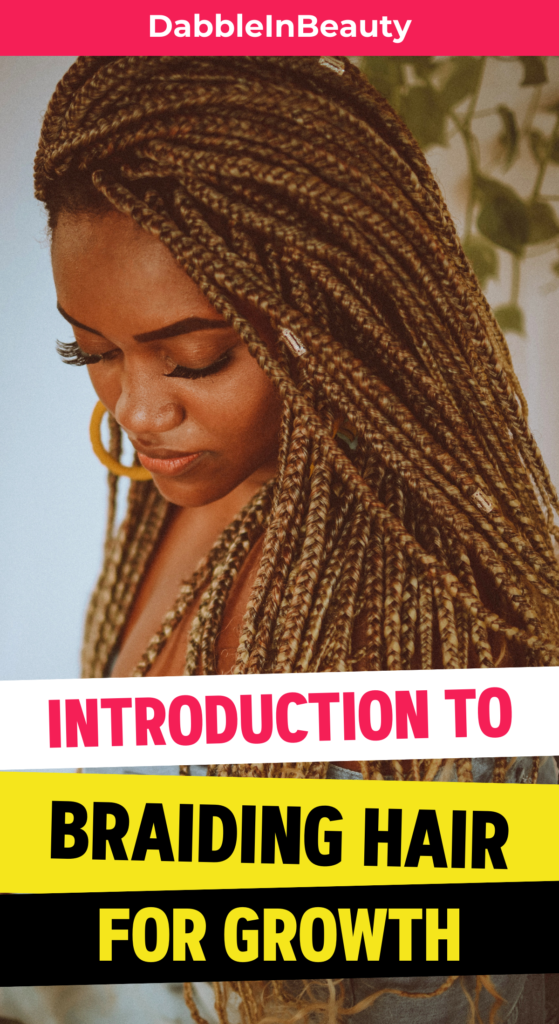
Many people believe that braiding hair helps with growth. But, hair growth is complex, involving genetics, nutrition, and health. Protective hairstyles like braids help keep hair long and reduce damage. Yet, they don’t make hair grow faster.
Exploring the Age-Old Belief of Braiding Promoting Hair Growth
The idea that braiding hair boosts growth comes from many cultures. People see the good in protective hairstyles for keeping hair long and preventing damage. This leads many to think braiding speeds up hair growth. But, the science behind hair growth shows it’s more complex, with many factors at play.
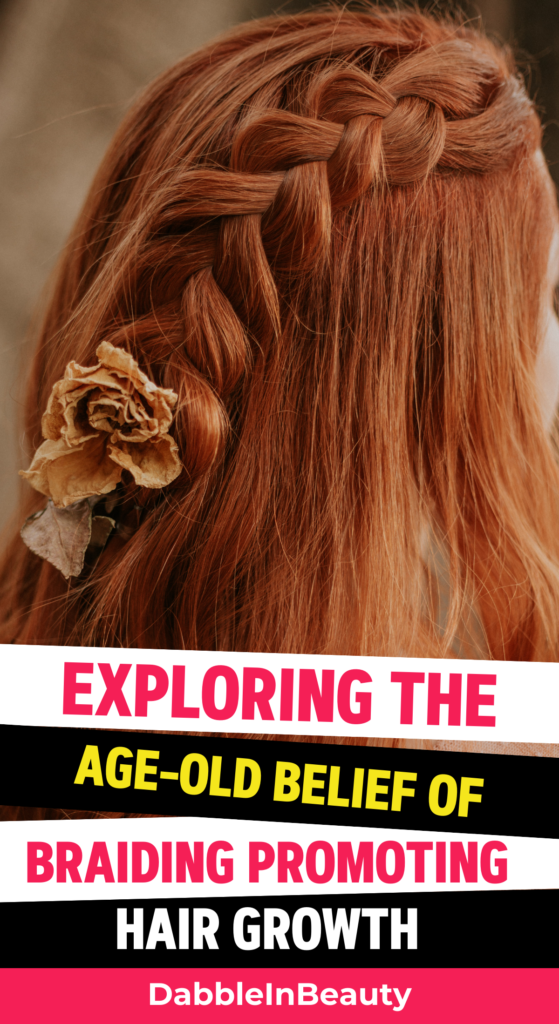
Understanding the Science Behind Hair Growth and Protective Styles
Hair grows about half an inch each month. The number of hair follicles you have is set at birth. Protective hairstyles like braids help keep hair healthy and long by reducing breakage and stress. They don’t speed up hair growth factors, but they help keep hair healthy, which helps in keeping length over time.
Benefits of Braiding Hair
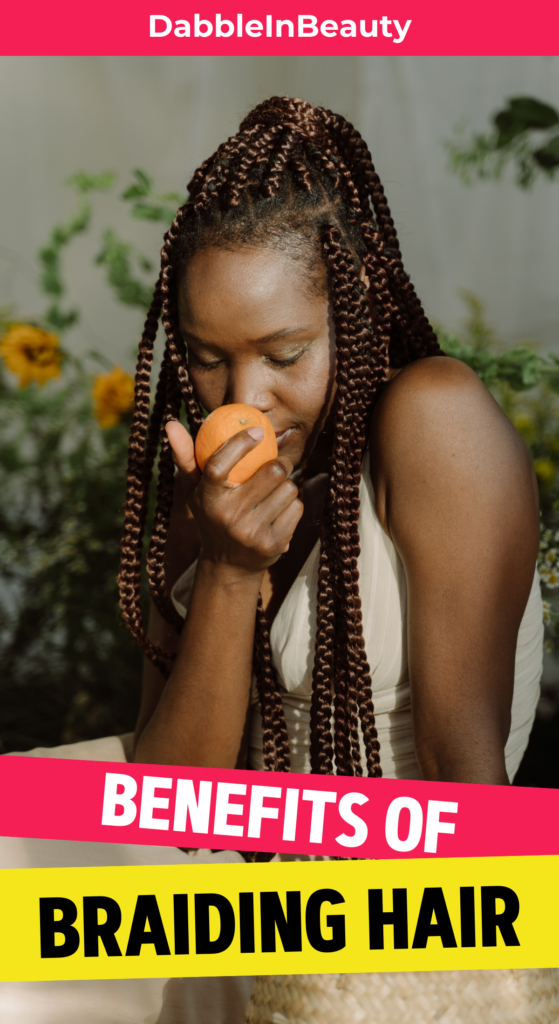
Braiding doesn’t make hair grow faster, but it has many benefits for hair health and keeping hair long. It makes hair stronger by tying strands together, which reduces breakage and damage. Also, the gentle braiding process can increase blood flow to the scalp. This brings important nutrients to the hair roots.
Strengthening and Protecting the Hair Shaft
Braiding protects the hair shaft by holding strands together. This lowers the chance of breakage and damage. It’s great for people with fragile or easily damaged hair. It keeps the hair strong and whole.
This method also helps in retaining length and making hair look fuller and healthier.
Enhancing Scalp Health and Blood Circulation
The gentle braiding can make blood flow to the scalp better. This brings important nutrients and oxygen to the hair roots. This can lead to healthier scalp conditions and support hair growth.
Braids also protect the scalp from things that might irritate or inflame it. This keeps the scalp healthy.
Does Braiding Directly Stimulate Hair Growth?
Braiding your hair doesn’t make it grow faster. But, it can make it look like it’s growing by protecting your hair and reducing breakage. Braids keep more of your hair’s natural growth, making it seem like it’s growing faster.
Hair growth comes from the biological processes in your follicles. These processes make new hair cells. Braiding doesn’t have any special properties to make these processes work better. But, braids do protect your hair from daily damage, which can help with healthy growth.
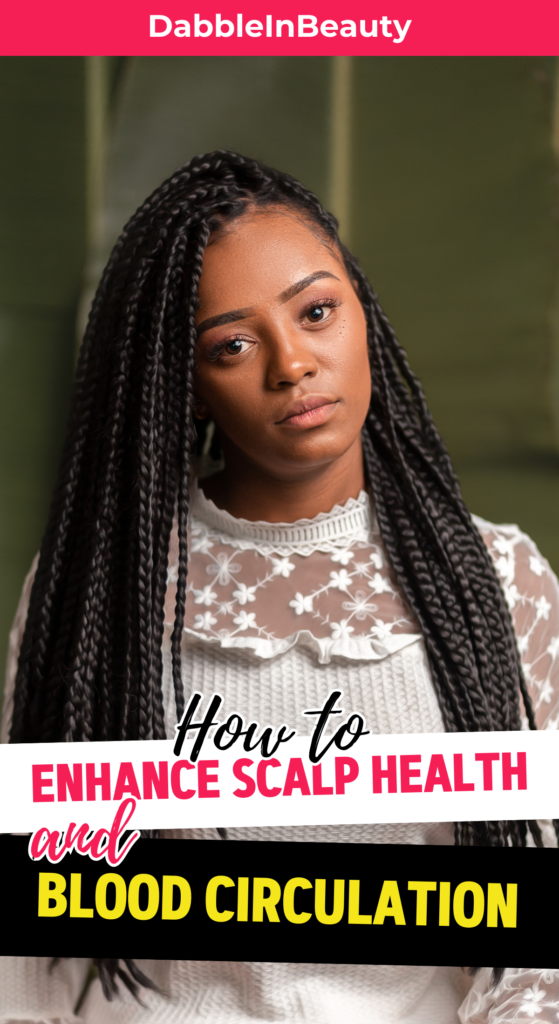
Braided hairstyles can last from several days to several weeks, depending on the style chosen. This means your hair gets less styling damage. So, it might look like your hair is growing faster while you’re wearing braids.
Braids also protect your scalp, which can improve blood flow. This brings important nutrients to your hair follicles and helps your hair stay healthy. This can make your hair look like it’s growing faster.
So, braiding doesn’t directly make your hair grow faster. But, it does create a good environment for keeping your hair long and healthy. By knowing how braiding helps your hair, you can use it as a protective style to support your hair’s natural growth.
Risks and Downsides of Excessive Braiding
Braiding can be good for your hair, but we must watch out for the risks. Tightly pulled braids can cause traction alopecia. This happens when the hair follicles get weak and stop making new hair. Also, bad braiding can lead to excessive breakage and damage to the hair.

Traction Alopecia and Hair Breakage
Dr. Afiya Mbilishaka, PhD, talks about this in the Good Hair study from 2016. Black women often feel more anxious about their hair than white women. Traction alopecia is a hair loss issue from bad styling. It can cause pain, itching, hair thinning, and emotional issues like depression and social anxiety.
Signs of Improper Braiding Techniques
Signs of allergic reactions to synthetic hair fibers or hair products include redness, itching, bumps, and inflammation. It’s key to tell your stylist if you’re feeling uncomfortable. This way, you can avoid hair or scalp damage later. Learning how to style and care for your hair properly is crucial to keep your braids safe and healthy.
Proper Braiding Techniques for Healthy Hair
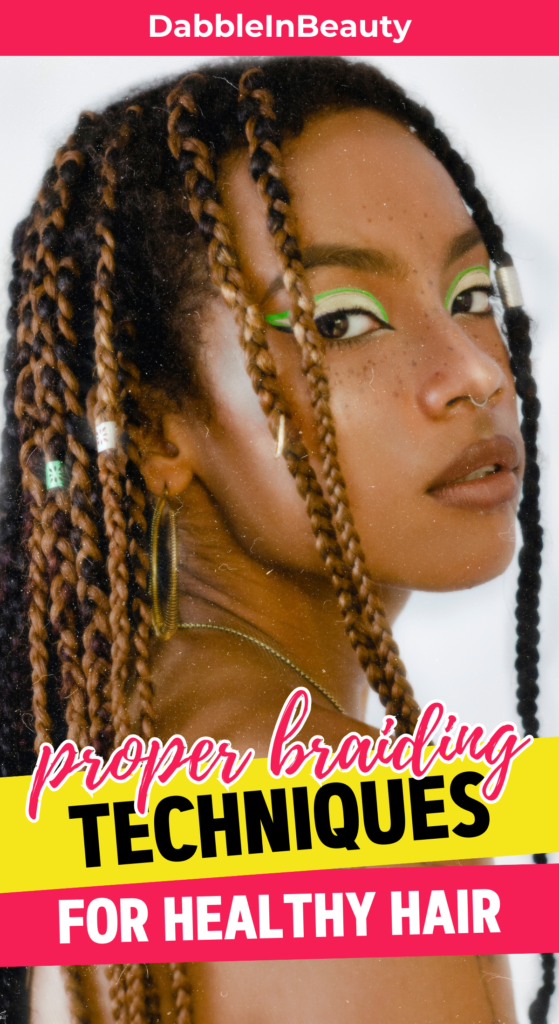
To keep braiding good for your hair, follow the right steps and tips. Pick braids that aren’t too tight to avoid hair and scalp damage. Keeping your hair moisturized is key to stop dryness and breakage. Also, don’t use too much product to prevent hair follicles from getting clogged.
Choosing the Right Braid Styles and Tightness
Choosing the right braid style and tightness is important for proper braiding techniques. Tight braids can harm the nerves, block blood flow, and hurt hair follicles. This can cause headaches and traction alopecia. Go for braids that are snug but not too tight, like knotless braids, which are gentler on the scalp and hair.

Maintaining Moisture and Avoiding Product Buildup
It’s vital to keep braids moisturized. Use a refreshing spray to stop dryness and breakage. After washing, use a deep conditioner, especially if you add extra hair. To avoid product buildup, clean your scalp and hair with a clarifying shampoo regularly. This removes dirt and product buildup.
Can Braiding Hair Help it Grow?
So, can braiding hair help it grow? Here’s the short answer: Braiding doesn’t make hair grow faster, but it can help keep the length you have. By protecting hair from damage and daily wear, braids reduce breakage and split ends. This lets hair grow longer before needing a cut.
This protective effect of braids helps keep the hair’s length. It makes it seem like your hair is growing faster.
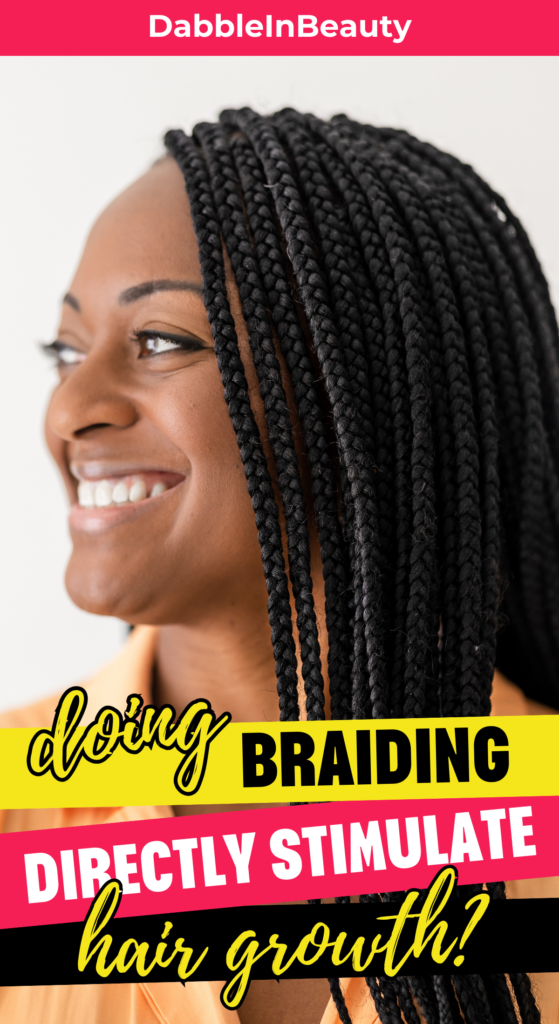
Examining the role of protective styles in retaining length
Protective styles like braids shield hair from damage and breakage. They help your hair keep its length and reduce the need for frequent trims. This can make it seem like your hair is growing faster.
Choosing protective hairstyles like braids helps your hair stay healthy. It keeps your hair looking longer and fuller over time. This can make it seem like your hair is growing faster.
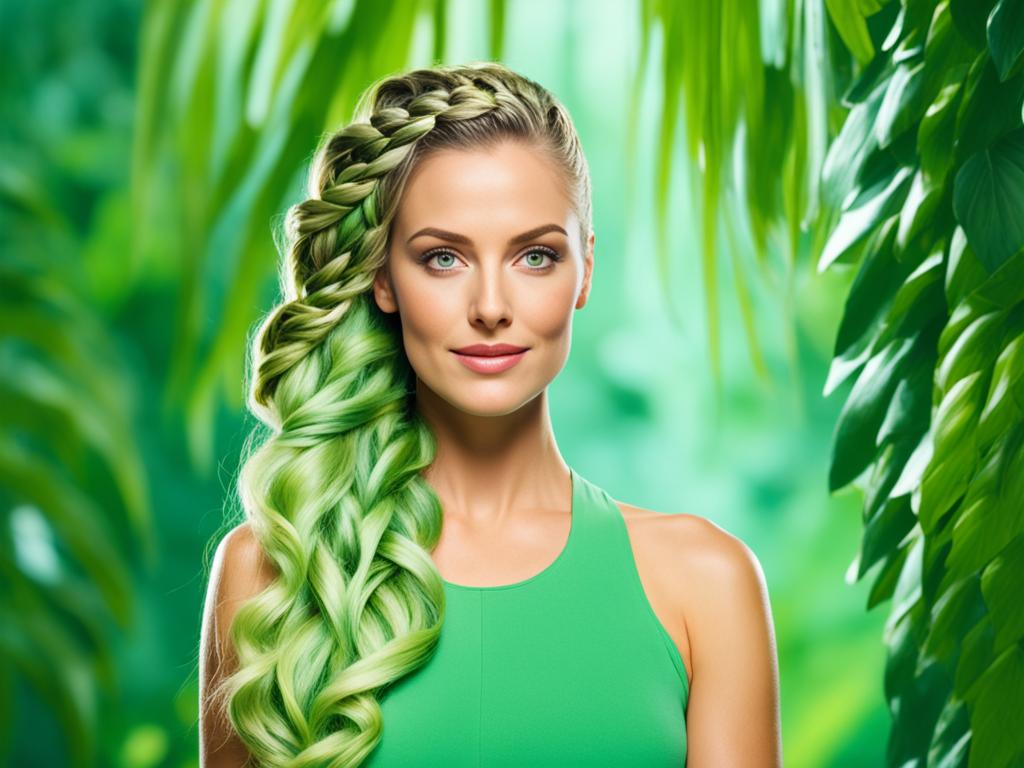
Caring for Braided Hair
Keeping your braided hairstyle healthy and long-lasting is key. You need to clean it regularly to get rid of product buildup and dirt. Also, moisturizing often helps prevent dryness and breakage. Taking good care of your braided hair is important for its benefits and to avoid problems.
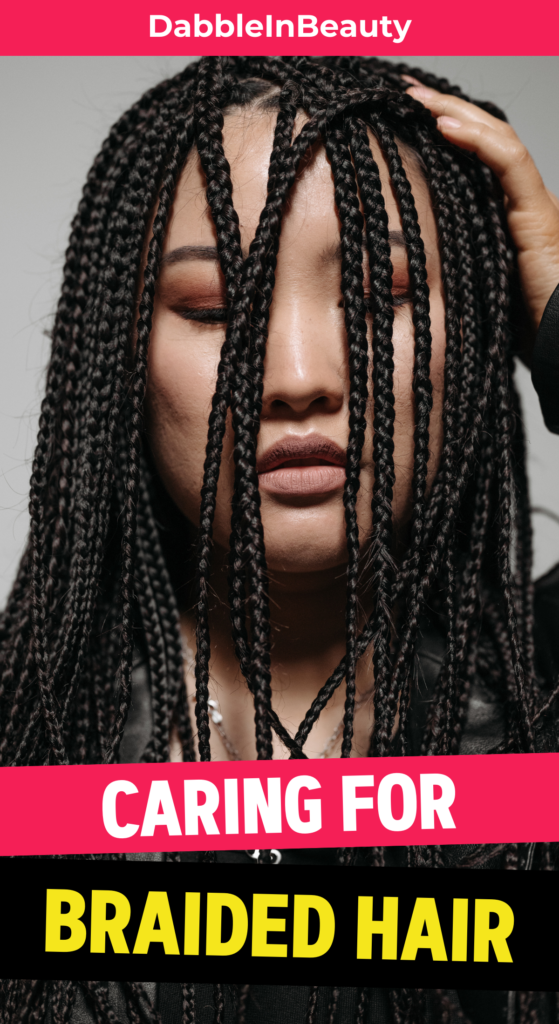
Cleansing and Moisturizing Routines
To keep your braids looking great, wash them every 1-2 weeks with a gentle shampoo. Make sure to massage your scalp to remove dirt or debris. After washing, use a moisturizing conditioner, leaving some in your hair to keep it hydrated.
Using a light oil or serum regularly can also help feed and protect your braids.
Avoiding Excessive Tension and Tight Styles
It’s important to avoid too much tension and tight braiding. Tight braids can cause traction alopecia and hair damage. Choose looser, more comfortable styles instead.
Be careful about how tight you braid. Using the right technique and paying attention to detail can help prevent damage from tight braids. This keeps your hair healthy.
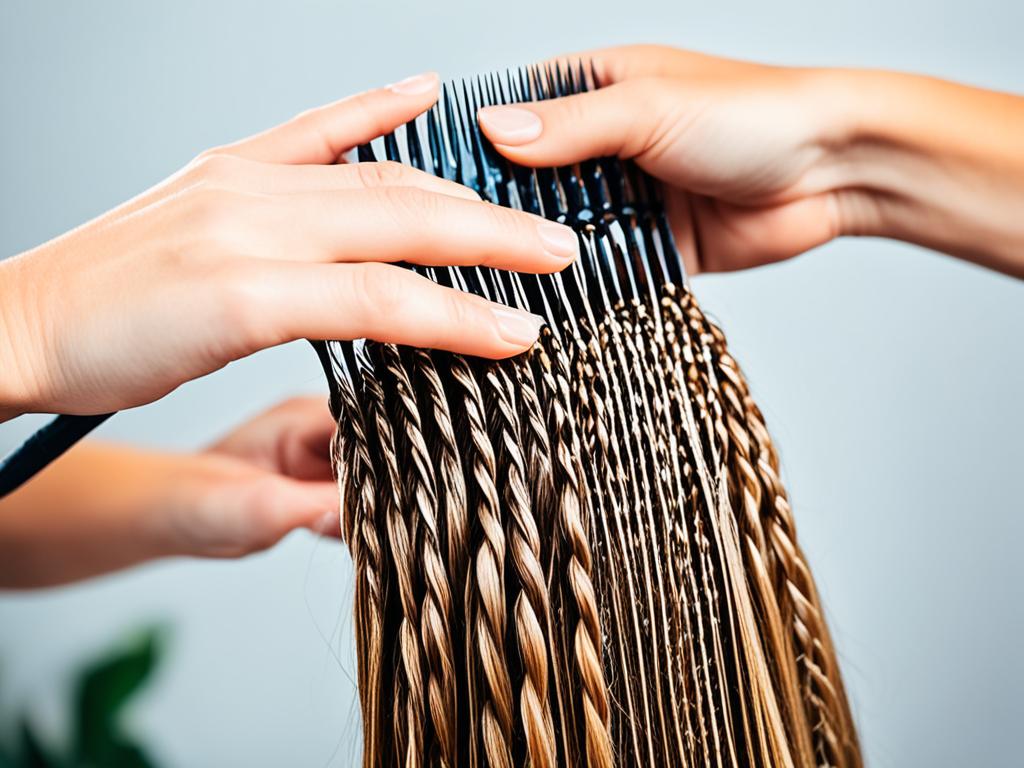
Optimal Duration for Keeping Braids
Finding the right balance with braided styles is key for your hair’s health and growth. Braids protect your hair, but keeping them in too long can cause problems like tangling and hair loss. Experts say to keep braids in for 3 to 6 weeks, depending on the style.
Box braids should be kept in for 4 to 6 weeks to protect the hair ends and prevent split ends. Cornrows are best worn for 3 to 5 weeks for scalp protection. For two-strand twists, keep them in for 3 to 6 weeks because they are gentle and versatile.
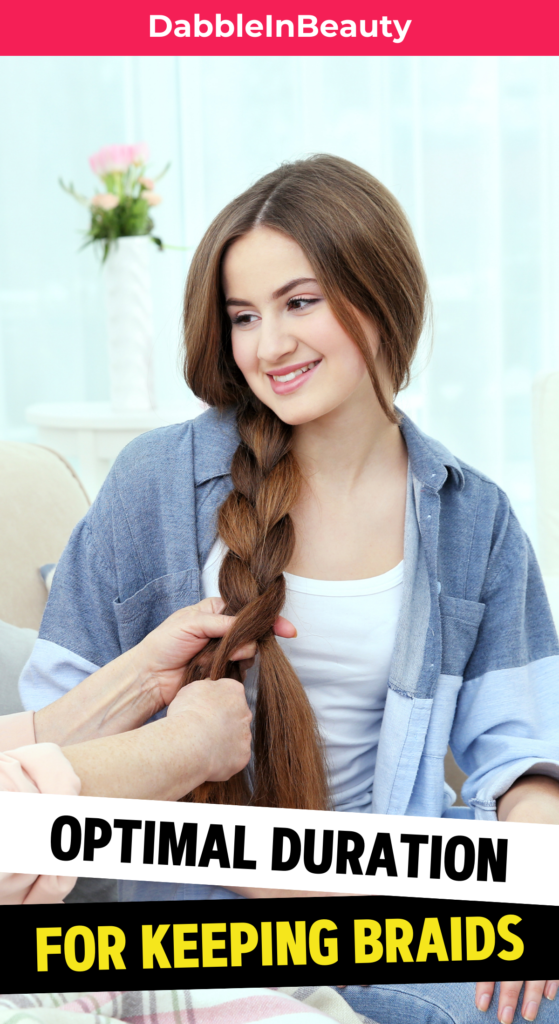
Braiding your hair every night can protect it from tangles and keep it moisturized. But, be careful not to braid too tightly to avoid breakage. It’s important to clean the scalp and keep it moisturized while wearing braids for hair growth.
The right time to keep braids depends on your hair type, scalp health, and hair condition. Knowing the best time helps you enjoy braids’ protective benefits without harming your hair’s health and growth.
Conclusion
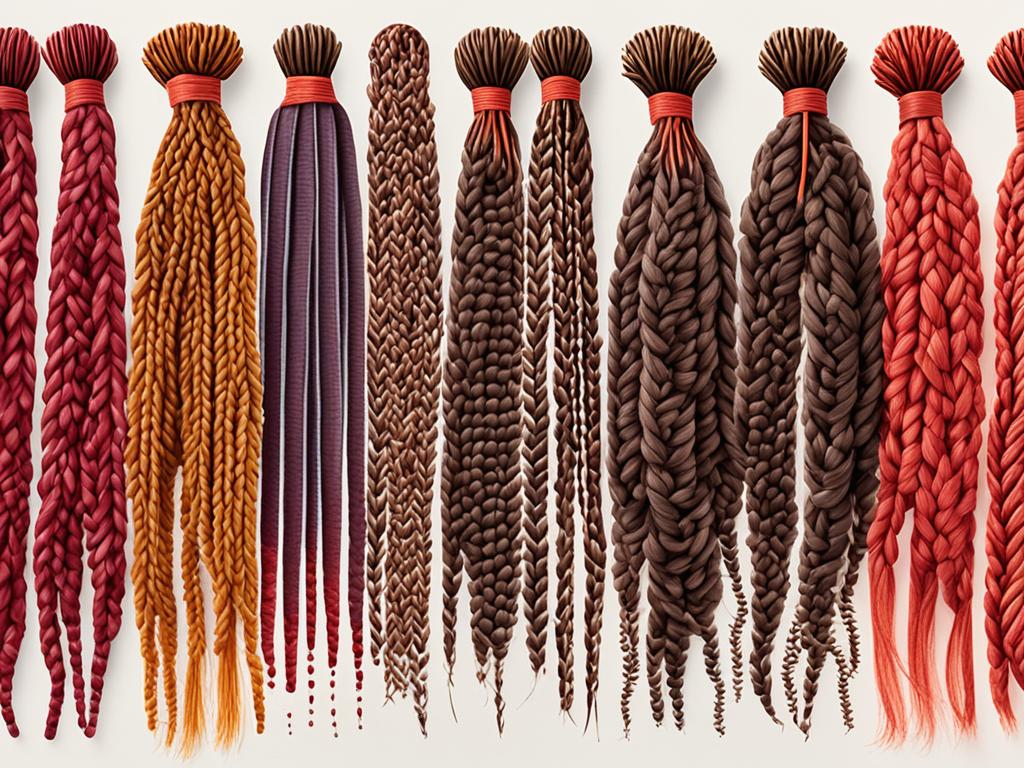
The link between braiding and hair growth is complex. Many think braids help hair grow faster, but science doesn’t back this up. Yet, braids can protect hair, helping it stay longer and healthier.
Learning the right braiding techniques and how to care for them is key. This can lead to less breakage and longer hair. By adding braiding to a good hair care routine, we might see these benefits.
Many things affect hair growth, and braiding is just one part of keeping hair healthy. We’ve learned a lot about how braiding affects hair growth. This knowledge helps us make better choices for our hair.
When caring for our hair, it’s important to be informed and balanced. Braids can be a great addition to keeping our hair healthy and shiny. By following the latest research and advice, we can make the most of braiding for our hair’s growth and health.

